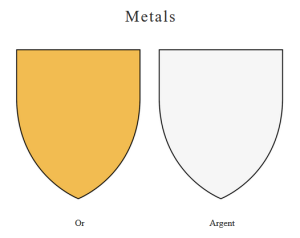Heraldry of the Hadrian Empire: Difference between revisions
FablesAdmin (talk | contribs) No edit summary Tag: Reverted |
FablesAdmin (talk | contribs) No edit summary Tags: Manual revert Reverted Visual edit |
||
| Line 1: | Line 1: | ||
== Introduction == | == Introduction == | ||
{| class="wikitable" style="float:right; margin-left: 10px;" | {| class="wikitable" style="float:right; margin-left: 10px;" | ||
|+'''Heraldik des hadrianischen Reiche''' | |+'''Heraldik des hadrianischen Reiche'''''(Heraldry of the Hadrian Empire)'' | ||
| colspan="2" |[[File:MissingArk.png|center|frameless]] | | colspan="2" |[[File:MissingArk.png|center|frameless]] | ||
|- | |- | ||
Revision as of 19:20, 4 January 2024
Introduction
| Author | Friederich von Bergwald-Holstein |
| Country | The Hadrian Empire |
| Language | High Attian, Common Tongue |
| Subject | Guide |
| Publisher | The Imperial Library of Adelsburg |
| Publication Date | Moonday 1, Redfall, 1541 |
Ever since the dawn of the Attian Empire, various symbols and flags have been used to represent individuals, families, or groups. Throughout the ages, simple colored cloths and small symbols sewn into the clothes of people have developed into extravagant symbols made by prestigious artists to represent great houses, families, kingdoms, and other allegiances. These heraldric symbols, or crests, are in modern times a popular and commonly used way to express one’s wealth and prestige within the Hadrian Empire. The more extravagant the symbol, the more prestigious its wearer’s house or company. There are a multitude of crests used throughout the empire and all use a very defined style. This article acts as a guide and overview of Hadrian heraldry.


